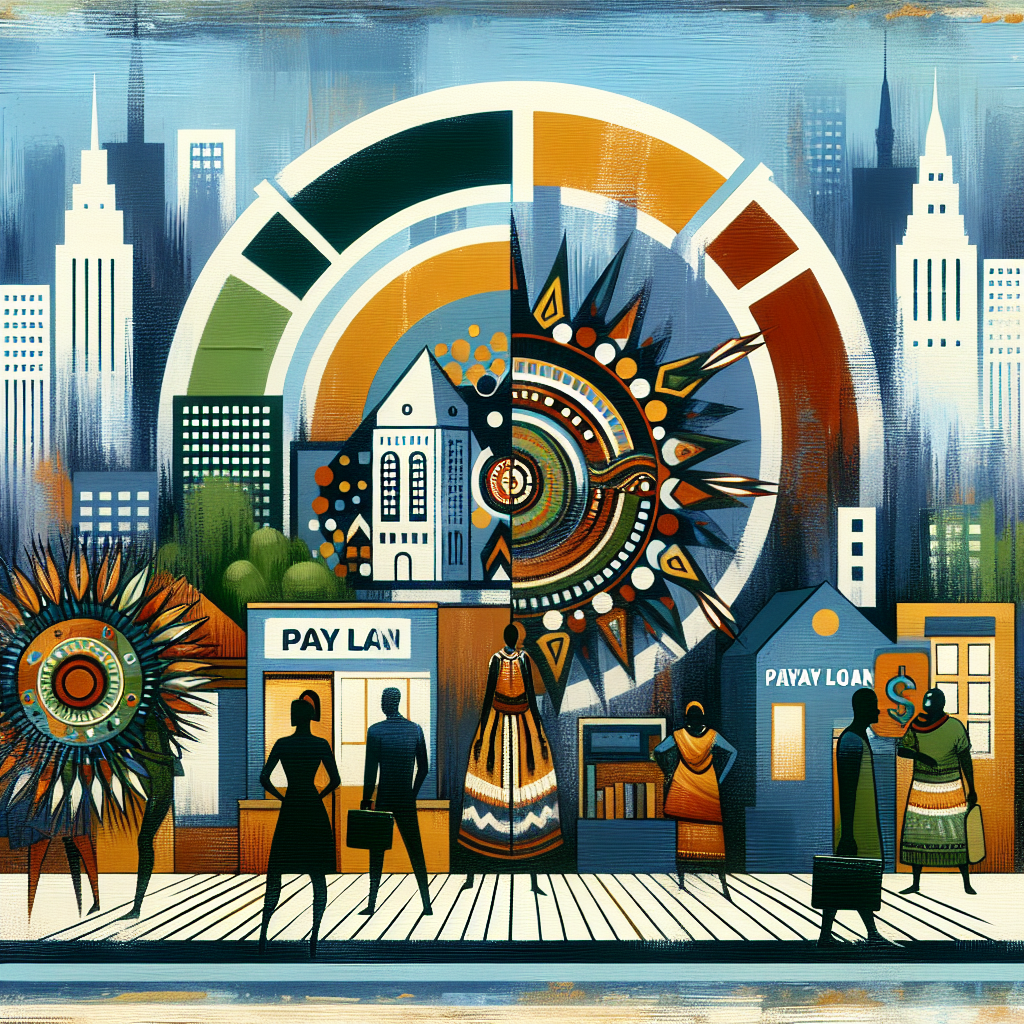Payday Tribal Loans

“Empowering Financial Independence with Tribal Sovereignty”
Payday Tribal Loans are short-term, high-interest loans offered by lenders who operate under the sovereignty of Native American tribes. These tribes are recognized as sovereign nations within the United States and are not bound by state regulations, allowing them to offer loans with terms that may not be permissible under state laws. Payday Tribal Loans are often sought by individuals who need quick access to cash and may have limited borrowing options due to poor credit or other financial constraints. However, due to their high interest rates and fees, these loans can lead to a cycle of debt for borrowers. It is important for consumers to understand the terms and potential consequences before taking out a payday tribal loan.
Looking for quick financial solutions? Secure your Payday Tribal Loan today! Click here to apply and get instant approval. Don’t let cash flow issues hold you back any longer!
Understanding Payday Tribal Loans: Benefits and Risks
Payday Tribal Loans are a form of borrowing that has emerged as an alternative to traditional payday loans. These loans are offered by lenders who are based on tribal land and operate under the sovereignty of Native American tribes. As such, they are not subject to the same regulations that govern state-licensed lenders, which can lead to both benefits and risks for borrowers.
One of the primary advantages of Payday Tribal Loans is their accessibility. For individuals who may have difficulty securing credit from mainstream financial institutions due to poor credit history or lack of collateral, tribal loans can provide a much-needed lifeline. The application process is typically straightforward and can be completed online, with approval and funding often occurring within a short timeframe. This expediency can be crucial for those facing urgent financial needs, such as emergency medical expenses or unexpected car repairs.
Moreover, because tribal lenders are not bound by state usury laws, they have the flexibility to offer loans with terms that might not be available elsewhere. This can include larger loan amounts and longer repayment periods, which can be more manageable for borrowers who need more time to get back on their feet financially. Additionally, some tribal lenders offer installment loans, which require payments over time rather than the full amount being due on the borrower’s next payday. This can help prevent the cycle of debt that often ensues with traditional payday loans.
However, the very sovereignty that allows tribal lenders to offer these benefits also introduces significant risks. Without the oversight of state regulations, tribal lenders can charge higher interest rates and fees than state-licensed lenders. In some cases, the annual percentage rates (APRs) on Payday Tribal Loans can reach into the triple digits, which can quickly escalate the cost of borrowing and trap consumers in a cycle of debt.
Furthermore, the legal protections available to consumers may be limited when dealing with tribal lenders. For instance, if a dispute arises, borrowers may find that their ability to seek legal recourse is restricted by tribal immunity, which can shield lenders from lawsuits. This can leave borrowers with fewer options to resolve issues that may arise with their loans.
Another risk associated with Payday Tribal Loans is the potential for unclear or deceptive lending practices. Some borrowers may not fully understand the terms of their loans, including the interest rates, fees, and repayment schedules. This lack of transparency can lead to unexpected financial burdens down the line, exacerbating the borrower’s financial difficulties.
In conclusion, Payday Tribal Loans can offer a valuable financial resource for individuals who are unable to access traditional forms of credit. Their quick approval process and flexible loan terms can provide immediate relief in times of financial distress. However, the high costs associated with these loans and the limited legal protections for borrowers necessitate a cautious approach. Prospective borrowers should thoroughly research and understand the terms of any payday tribal loan and consider all other available options before committing to this form of borrowing. By weighing the benefits against the risks, individuals can make informed decisions that align with their financial needs and circumstances.
The Legal Landscape of Payday Tribal Loans in the United States

Payday Tribal Loans: The Legal Landscape in the United States
In the complex financial ecosystem of the United States, Payday Tribal Loans have emerged as a significant point of contention and discussion. These loans, offered by lenders owned by Native American tribes, claim sovereignty and thus operate under different regulations compared to traditional payday lenders. The legal landscape surrounding these entities is intricate, shaped by a blend of federal laws, state regulations, and tribal sovereignty, which has led to both opportunities and challenges for borrowers and lenders alike.
Tribal sovereignty is the cornerstone of payday tribal lending. Native American tribes are recognized as sovereign nations within the United States, and as such, they have certain rights to govern themselves and manage their affairs independently. This sovereignty extends to economic activities, including lending, which allows tribes to operate lending businesses under their own legal frameworks. Consequently, Payday Tribal Loans are not subject to state usury laws or licensing requirements that typically govern payday lending. This unique position has sparked a debate over the balance between tribal sovereignty and consumer protection.
On one hand, the autonomy afforded to tribes has enabled them to create lending businesses that can be a vital source of revenue for their communities. These revenues can fund essential services such as healthcare, education, and infrastructure, contributing to the welfare and development of the tribe. Moreover, for consumers who may have limited access to traditional banking services, Payday Tribal Loans can provide a critical financial lifeline in times of need.
However, the friendly facade of accessibility and immediate relief masks potential pitfalls. Payday loans, in general, are known for their high-interest rates and fees, which can trap borrowers in a cycle of debt. Tribal loans can carry even higher costs due to the absence of state regulation. This has raised concerns among consumer advocates who argue that borrowers may be exposed to predatory lending practices without the usual state protections.
The legal landscape is further complicated by the evolving nature of the internet. Many payday tribal lenders operate online, reaching consumers far beyond the geographic boundaries of their reservations. This has led to numerous legal battles as states have attempted to apply their laws to tribal businesses that serve state residents. The courts have been divided on these issues, with some rulings favoring state regulations and others upholding tribal sovereignty.
In response to these legal ambiguities, federal agencies have stepped in to provide some oversight. The Consumer Financial Protection Bureau (CFPB), for instance, has asserted its authority to regulate tribal lenders under federal consumer protection laws. The CFPB’s stance is that while tribes are indeed sovereign, their lending operations must comply with federal laws that protect all consumers across the country.
The legal tug-of-war continues as tribes and regulatory bodies navigate the complex interplay of sovereignty and consumer protection. The future of Payday Tribal Loans will likely hinge on a delicate balance that respects tribal rights while ensuring that borrowers are not exploited by onerous loan terms. As the legal landscape evolves, it is imperative that both lenders and borrowers remain informed about their rights and responsibilities. Only through a nuanced understanding of the legal framework can the benefits of tribal lending be harnessed, and its risks mitigated, ensuring that this financial service operates to the advantage of all parties involved.
Comparing Payday Tribal Loans to Traditional Short-Term Financing Options
Title: Payday Tribal Loans
In the realm of short-term financing, Payday Tribal Loans have emerged as a significant alternative to traditional lending options. These loans are offered by lenders who operate under the sovereignty of Native American tribes, and as such, they often have distinct terms and regulatory frameworks compared to conventional payday loans. When comparing Payday Tribal Loans to traditional short-term financing options, it is essential to consider the nuances of each to understand their potential impact on borrowers.
Payday Tribal Loans, also known as tribal installment loans, are typically accessed online and promise a quick infusion of cash for individuals facing immediate financial needs. The unique aspect of these loans is that they are originated by entities that claim sovereignty, which means they are not necessarily bound by state regulations that govern payday lenders. This sovereignty allows tribal lenders to offer loans in states where payday loans might be restricted or illegal.
One of the primary differences between Payday Tribal Loans and traditional payday loans is the regulatory environment. Traditional payday lenders are subject to state laws, which can include caps on interest rates, rollover limits, and prohibitions on excessive fees. In contrast, tribal lenders may bypass these restrictions, potentially leading to higher interest rates and fees for borrowers. This freedom from state regulation can be a double-edged sword: it may provide access to credit in areas where it is scarce, but it can also lead to terms that are less favorable to the consumer.
Another point of comparison is the structure of the loans themselves. Traditional payday loans are typically due on the borrower’s next payday, which can lead to a cycle of debt if the borrower is unable to repay the loan in full and must roll it over. Tribal loans, on the other hand, are often structured as installment loans, allowing for payments to be spread out over several months. This extended repayment period can provide more flexibility for borrowers, but it can also result in a higher overall cost of borrowing due to prolonged interest accrual.
When it comes to accessibility, both Payday Tribal Loans and traditional payday loans offer quick application processes and fast funding. However, because tribal lenders operate online, they may be more accessible to individuals who do not have easy access to brick-and-mortar lending institutions. This online presence can be particularly beneficial for those in remote areas or for individuals with mobility issues.
Despite these differences, both Payday Tribal Loans and traditional payday loans share a common criticism: they can both lead to cycles of debt for consumers who are unable to manage the high-cost borrowing effectively. The potential for this cycle underscores the importance of borrowers fully understanding the terms of any short-term loan they are considering. It is crucial for consumers to review the interest rates, fees, repayment schedules, and the lender’s reputation before entering into any loan agreement.
In conclusion, while Payday Tribal Loans offer an alternative to traditional short-term financing options, they come with their own set of considerations. The sovereignty of tribal lenders gives them a degree of autonomy that can lead to less restrictive lending practices, but this can also result in terms that may not always be in the best interest of the borrower. As with any financial decision, it is imperative for individuals to conduct thorough research and consider their ability to repay the loan before committing to either a payday tribal loan or a traditional payday loan. By doing so, borrowers can make informed decisions that align with their financial needs and circumstances.
Q&A
1. What are Payday Tribal Loans?
Payday Tribal Loans are short-term, high-interest loans offered by lenders that operate under the sovereignty of Native American tribes. These tribes are federally recognized and their lands are considered sovereign territories, which means they are not bound by state regulations that govern payday loans.
2. How do Payday Tribal Loans differ from traditional payday loans?
The main difference between Payday Tribal Loans and traditional payday loans is the legal jurisdiction under which they operate. Tribal lenders can offer loans with higher interest rates and fees than those allowed by state laws because they are subject to tribal laws and federal regulations, but not state regulations. This often results in more lenient lending standards and longer loan terms, but also can lead to much higher costs for borrowers.
3. Are Payday Tribal Loans legal?
Payday Tribal Loans are legal under federal law because of the sovereignty of Native American tribes. However, their legality is a subject of ongoing legal debate. Some states have challenged the legitimacy of such loans, arguing that they violate state consumer protection laws. The Consumer Financial Protection Bureau (CFPB) and other federal agencies have also taken steps to regulate these lenders, but the legal landscape remains complex and varies by jurisdiction.Conclusion: Payday Tribal Loans are short-term, high-interest loans offered by lenders that operate under the sovereignty of Native American tribes. While they may provide quick access to cash, they often come with high fees and interest rates, which can lead to a cycle of debt for borrowers. The loans are controversial due to their cost and the legal gray area in which they operate, as tribal sovereignty allows them to bypass some state regulations. Consumers should approach these loans with caution and consider alternative financing options.



